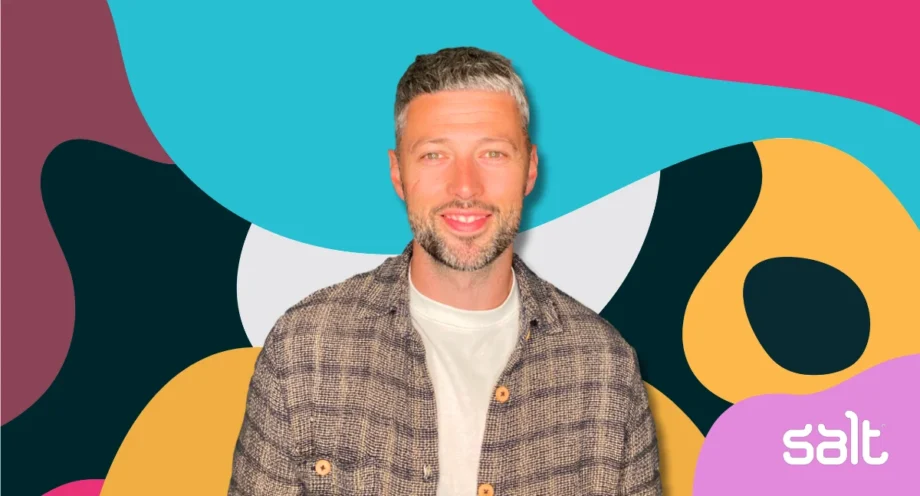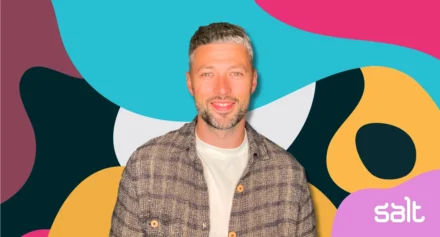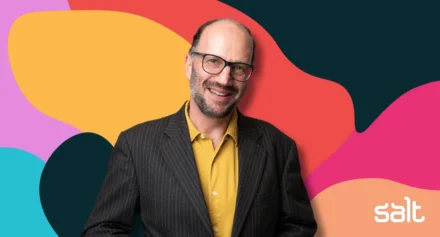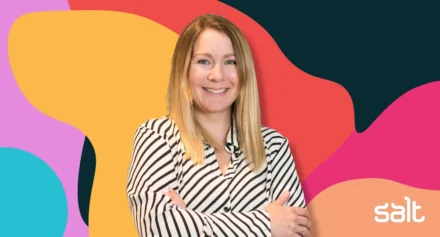The power of LinkedIn is its people: how to achieve reach and results
LinkedIn is rapidly evolving and brands that want to break through the noise need to understand these changes and leverage them!

LinkedIn has already changed the way we recruit and sell today. Now the platform is rapidly evolving and brands that want to break through the noise need to understand what these changes mean for their business and Marketing strategies.
Sean Anderson shares what’s changed on LinkedIn and how to adapt in this expert guest blog:
I’m Sean Anderson, the founder and CEO of Hoxo Media. We are an agency that brands recruitment organisations and their people better. We either manage or coach them to brand their organisations and their individuals in a way that elevates them online, particularly on LinkedIn, raises their awareness and helps them stand out in such competitive marketplaces.
While my expertise is in recruitment, helping recruiters stand out in their markets and reach candidates and clients, what I share in this article rings true for any brand and their Sales and Marketing team trying to gain traction and raise awareness on LinkedIn.
Clash of the methodologies: keeping up with Tech in Recruitment and Sales
When I started in Recruitment in 2011 in Australia, LinkedIn had about a hundred million users. Now LinkedIn has 850 million users and are predicted to reach a billion in 2024.
The way in which LinkedIn is used is worlds apart from when I started in 2011. But imagine you’d started in 2001, before LinkedIn, imagine you were in the days where you used to fax CVs across to organisations.
The truth is the majority of recruitment organisations are led by males, who are between 30 and 50, started in recruitment probably 10 to 20 years ago, were super successful individually in those early days, and then have grown through the development of people.
What they’re finding themselves in is a unique time where technology and social media is evolving so fast that it’s changing the way people can do things.
A lot of these people are so stuck in the way that they did it, seeing it as the only way to do it because that’s been successful for them, that they find it very difficult to want to change.
Now that the younger generation are coming into the sector, they’re quite socially savvy in their spare time, and they don’t really have any experience of phoning people. They don’t phone even their friends anymore. Everything’s instant messenger and text.
There’s a clash with the older generation, used to doing everything over the phone or in person.
No one’s right or wrong. But the truth is that the world is changing and if your talent that’s coming into your business is younger, so are the hiring management and the candidate community externally.
If you think that forever your Black Book contacts that you phone up and take for lunch every Christmas is the only way you’re going to recruit or sell, then you know you’re missing a trick.
My mantra and vision and mission is to bridge that gap and to educate people and ensure that this new world is understandable.
I’m 36, I’m not 22. But I kind of live in a world where I’m focused on social and change. However, I can still empathise with the older generation. I’ve worked in those environments and I grew up in a pre-internet, pre-social media world. I can see both sides.
To see results, I think it’s about helping people see these changes as an opportunity and not as a threat. That is what I’m passionate about.
50 years in 5: LinkedIn is changing fast and brands need to adapt
You’ve already seen so much change but in the last three to five years, I’d say LinkedIn and technology has evolved so fast it’s changed more than in the last 50 years.
Catering to creators
In around 2017 LinkedIn first started to allow native video integration. Before that, users had to put a YouTube link up and it didn’t really work very well. As soon as they incorporated video into the platform, I noticed more creators. People started to use it.
Then around 2 years ago, LinkedIn brought in the follower feature. This meant that like Instagram and TikTok and Twitter, you no longer had to be connected to someone to see their stuff, you could just follow them.
The follower feature was another big play to turn LinkedIn into more of a social network rather than just a professional networking site.
Why would anyone follow you if you’re not producing content? Unless you’re in Business Development and you just want to follow them to get on their radar, most people follow brands and individuals they found interesting or whatever.
The follower and the creator mode change that they made a year ago or so was a big one. It’s made a massive difference to your newsfeed.
Suppressing brand content
LinkedIn is trying to get more money from corporate businesses through ad revenue. Facebook published over 112 billion in revenue last year from adverts alone. Whereas LinkedIn only published 8 billion. So, they’re nowhere near those other platforms.
What LinkedIn have done is they’ve turned corporate platforms into their opportunity to sell ad space, and to do that, they literally depress company page content.
Go on LinkedIn, have a look. The first post on your newsfeed will be a human being, a person. The second post will be a company saying promoted, and then you’ll get maybe two or three more people and another company promoted, and that’s all you’ll see.
So organic content from a company, even if you’ve got 50,000 followers, barely get seen, because LinkedIn’s company reps want to phone you and say, “Hey, your company page is underperforming. Why don’t you spend some money on our ad platform so we can generate and guarantee you’ll get this X reach in X location.”
Ads are great, and they work. There are businesses that run all their sales through adverts. But when it comes to LinkedIn, you can get insane organic reach if you know what you’re doing, and that’s at a personal level.
How to adapt to a new age of LinkedIn: Marketing power to the people
Traditionally, recruitment organisations have hired lots and lots of salespeople, like 90%, 99% of their workforce. Then they might hire someone in marketing. They expect that one individual in Marketing to deliver a message for their brand that appeals to every single sector and market that they operate within. This is true for lots of other businesses with wide service or product offerings as well.
So, let’s just say for instance, you’ve got 10 recruiters, and they’re each doing slightly different variations of a market. How does your individual company marketing person cater for all 10?
The truth is, they never will. The truth is, you are always playing a priority game.
And that’s just 10. I’ve got clients that have got well over 150 people. Some have got 5, 500, 700 thousands.
The company should provide the anchor. It should be the base that says exactly what you do. It looks and feels exciting and it represents the brand, but ultimately, it’s the people on the ground who are front office who are being paid to speak to human beings. They’re being paid to build a LinkedIn network. They’re being paid to do deals.
So, if they’re the individuals that can collectively impact online channels, then marketing is everyone’s responsibility.
Think about it. If every single person in your business spoke about the market that they knew to the people that they’re connected to, then your business can market in every direction it needs to at all times. It’s the most agile it could ever be.
On LinkedIn, one person can blow the platform up faster than a company page can, spending hundreds of thousands of pounds.
It’s about understanding what’s possible. It’s about empowering the model that we have today anyway, and empowering the fact that majority of our workforce are out there doing the job.
There’s no value in pitting marketing against sales and going, well, marketing needs to generate as much leads as sales. They should be working together. It should be a joint effort.
Recruiting on LinkedIn?
Work with Sean and his expert team at Hoxo Media to start leveraging your LinkedIn to your advantage today. Sean outlines his full service offering, stories of success and more in our interview, which will be online next week!


